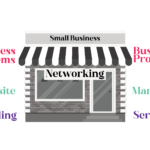When you first start off in business there are more expenses and tasks you can put your finger to. You need to register the business, pay your accountant, pay lawyers to draft up contracts, design your website, logo and the list goes on.
In most cases this is often a very expensive process but it doesn’t have to be if you put in some fundamental steps prior to the commencement of the process. Let’s face it at the start of any business every dollar counts, in fact I would go as far as saying every cent counts.
The less you spend in setting up your business the more money you will have in promoting your business to bring in revenue which is the only thing that matters in business whether you are a start up or established enterprise.
Too often I see entrepreneurs spend thousands of dollars in setting up their business only to have little or no money left to promote it. How do I know this, well I used to be one my self.
Early on in my entrepreneurial path, the very first couple of businesses I started I over spent by getting an office because I thought it would be handy, I spent thousands of dollars on my website design because I wanted it to be perfect, purchased unnecessary equipment/technology and the list goes on.
Off course I was not aware of this at the time, though I wish I had been.
It was around my 5th year in business that I decided to get a business mentor on board to help me fine-tune some of my skills in business. At this stage I had failed in my first four businesses and lost over half a million dollars.
As we sat down together diagnosing the various aspects of all the businesses I had started in the last four years there were several things that really stood out:
1) My lack of knowledge and understanding in the industries I entered
2) An inability to keep to budget and therefore over-spend on unnecessary expenses especially at the start up stage
As we continued to look deeper into the numbers it became more and more clear that even though my lack of market research was the main reason for my failures, at the same time I quickly learnt that I would have saved a lot of money if I didn’t over spend in the initial stages.
It was in that moment that I decided that no matter what company I start moving forward I will ensure it meets two fundamental rules:
1) Market research is conducted
2) Expenses are kept low
By implementing these rules over the last few years not only have I become more innovative and creative in terms of generating business; but I have also saved a lot of money on unnecessary expenditure.
Whilst there have been many strategies along the way, there has only been one which has stood out and proved to bring in the best rate of return on investment when compared to the rest. And that is:
Strategic partnerships
A strategic partner is a legal term that describes the relationship between two or more parties engaging into an agreement to work towards the same outcome, while joining or remaining separate parties.
If you study the corporate strategy of some of the biggest brands in the world today, you will see one thing they all have in common: the implementation of strategic alliances within their corporate strategy with key industry partners.
One example of this is Toshiba. In the early 1990s, Toshiba signed a co-production agreement for light bulb filaments with GE. After signing that deal, Toshiba continued their surge by creating strategic partners across their range of products with partners that included Apple Computers, Ericsson, IBM, Microsoft, Motorola, Samsung and Siemens.
As Mr. Sakaida, Toshiba’s President and CEO said, “A single company cannot dominate any technology or business by itself”.
Not too long ago, the world’s largest social networking website, Facebook, entered into a partnership with software provider Skype that will offer its users the ability to have live free video chats with each other.
A deal such as this allows Facebook to gain new capabilities without having to build them from scratch, sees Skype leverage massively through Facebook’s existing 750 millions users, and provides both parties an increase in market share and dominance. The CEO of Skype, Tony Bates, commented: “This partnership will help us significantly in reaching our milestone and goal of one billion users.”
But you don’t have to be as big as Facebook, Toshiba or Skype to start creating strategic partnerships with other organisations in your industry. Any business, regardless of size, industry or age has the ability to start implementing this strategy.
Establishing a strategic partnership is not hard; in fact it’s very easy once you understand the art and science of how it works. Before approaching other organisations to partner with, there are several aspects an organisation needs to assess and consider.
Organisations will only go into a partnership with you if they believe the move is going to build their own brand and image in their chosen industry. There are many factors that constitute a good brand in the eyes of a potential alliance partner; the more of these you have, the greater the level of credibility you will demonstrate in their eyes.
Her are some of the most important factors they look for:
— First impressions last: Most organisations will make up their mind on whether or not they want to partner with you based on their initial interaction with you.
— Good customer service: Organisations have worked long and hard in building a good relationship with their clients, and the last thing they want to do is ruin that relationship by partnering with a company who does not provide an excellent level of customer service.
— Credibility in the market: Potential partners want to know whether or not the service you are providing is of value to their clients, if you are trustworthy and most importantly how your company is positioned against other competitors in the market place.
Once you have properly prepared your business, you are now ready to approach potential joint venture partners. The steps required in creating a successful partnership don’t usually change that often, but the methodology and approach is always different because it is heavily dependant on what the potential partner is looking to get out of the relationship.
Step 1
Identifying the right organisation to partner with is the first step in the process. Think of businesses that are complementary to yours. This might be the company customers go to before they come to you, the one they visit after they’ve come to you or another business that has the same target market but a different service/product from yours. For example: A business advisory firm would consider doing a joint venture with an accounting firm.
Step 2
Now that you have identified potential organisations to partner with, your next step is to contact them and speak to the relevant person, simply to open up the conversation and request a meeting for about 30-45 minutes. Generally, the general manager is the best person to speak with.
Step 3
Your next step is to prepare yourself for the meeting. Study their company background, their mission, values and industry to get an understanding of both the company and the industry.
Step 4
The purpose of the meeting is to spent time building rapport, getting to know your potential partner and their business, and discussing ways to best add value to one another. During this period a potential partner will usually decide whether or not they want to do business with you.
Step 5
At the end of the meeting, your next step is to set up a free trial or sample of your product/service so that the potential partner is able to gain confidence and trust in how you operate your business. If they have a good experience they are more likely to sell your services with a lot more confidence to their clients.
Step 6
Once you have successfully completed the trial or test stage and your joint venture partner is happy with how things panned out, you then want to sit down with them and construct a deal that is fair and of value for all parties involved.
The main thing to consider when approaching companies to partner with is to ensure you are approaching the conversation from the standpoint of what value you can provide them rather than thinking of how you can best benefit from the partnership.
Mastering this marketing strategy will provide your business with more demand than you can handle and exposure to thousands of targeted customers – and all this can be done with little or no marketing budget
This is a brilliant way to manage your cash flow, especially when you start out in business but it can often end in disaster if it has not been set up and executed properly. Here are some tips to bear in mind before performing a contra deal:
– Ensure effort is equal from all parties involved: It’s important that all parties within the partnership are contributing the same value of resources and effort. If not, and the deal fails, one or more businesses can suffer more than the others and possibly damage their business. Additionally abuse can enter the arrangement where other “lessor” parties take too much advantage of another business.
– Have set milestones and timeframes: Some people love the process of creating a strategic partnership more then the action steps of making it happen. Ensure you are clear and concise on the set milestones and timeframes you require tasks to be completed on both ends
– Everything must be in writing: The long and short of it is, not all strategic partnerships will be successful and therefore you must protect yourself by ensuring everything is put in writing, signed by all parties involved and witnessed by an independent third party. A third party can independently question each business without being seen as favouring one business over another.
If the deal fails then the stakeholders may blame each other or “forget” the deal and their obligations. This holds all parties involved accountable; knowing they have set roles and responsibilities to fulfil.
– Be patient: Developing partnerships can be a drawn out process. The odd false start can be involved. Personnel may change. Objectives may move on. Be patient, nurture your lead and never rush into anything.
– Do your due diligence: Before entering in any strategic partnership deal take some time in developing a relationship with the person you have in mind. For whatever reason if you have entered a deal and the contra is not going well or you feel the other party is not pulling their weight then kill the deal. Don’t let it drag on and on.
Impacts of the global economy are now felt in every sector of the economy. In this more complex world, competition is not merely based on price. Partnerships are essential for organizations to prosper in a future environment where institutions both public and private will be seeking the next quotient of effectiveness.
Meaningful partnerships are the foundation for success. Partnerships is what enables many companies to make continuous improvements. By sharing with others, you can direct your resources and capabilities to projects you consider most important.
One of the most over looked sources of leads for any small business is the rich pool of non-competing businesses that serve the same target market. Identifying these businesses in your market and finding ways to gain access to their customer base is one of the quickest ways to flood your business with new opportunities.
Many businesses get the idea, and some even actively strike up the occasional strategic partner deal or leading swapping campaign, but few tap into this approach to the full extent.
Alex Pirouz
About the author
From failing in his first four businesses to running and exiting multiple successful start up businesses, one with over 35 staff; he’s the business advisor Government organisations, Celebrities, CEO’s, Professors, Entrepreneurs and business owners turn to in order to successfully start, grow and exit their business.
Alex’s work has been featured in over 50 publications including: Channel 10, ABC, Sunrise, SMH, The Age, Yahoo 7, Smart Company and he currently writes for four business publications. As a sought after speaker Alex has presented at many universities, movie premiers and blue chip companies.
An active philanthropist, Alex spends a portion of his time working with social enterprises to help foster positive change for the purpose of creating a more equal society. In recognition for some of his work he was nominated Australian of the year in 2007 & 08. He is the author of the book: Unlock The Passion Within You.
This is a sample chapter from the fantastic business guide book, How To Start A Business With Little Or No Cash. The definitive handbook to starting a business with very little financing. With pages filled with valuable, practical, jargon-free advice, this is the entrepreneurs survival guide on getting a business up and running without breaking the bank. Click here for your copy.







